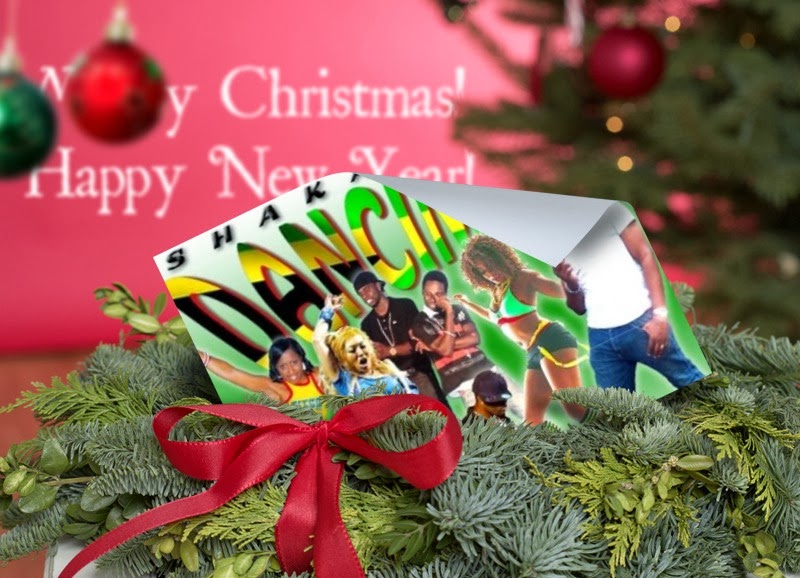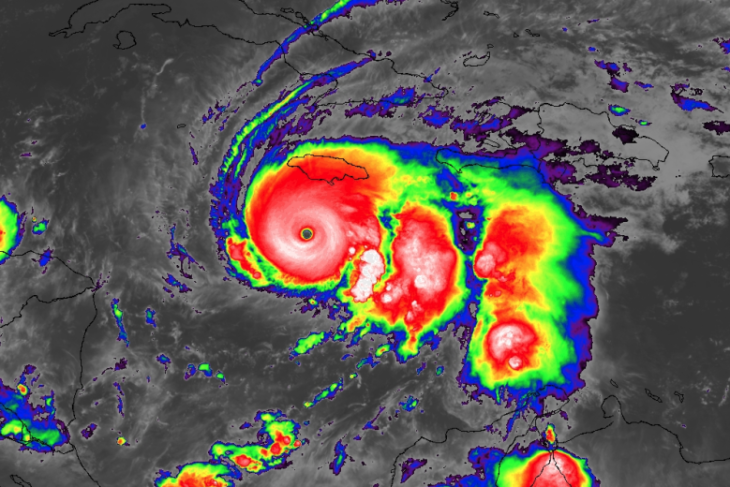
Note to Readers: This essay on dub was originally published in a longer form in PREE. I was happy to oblige when the editors of Public Opinion asked me to consider doing a remix and making a shortened version.
I grew up in a household where food, music, and language reigned. My mother cooked the most mouth-watering curry chicken and was a stickler for words. While in med school, my father was in an up and coming reggae band, and as a result our small house was filled with music. Alongside these general memories are more specific ones, like my mother reading to me at night from The Book of 365 Nursery Rhymes. I loved those rhymes and their turn of phrase, from people losing their sheep and their shoes, to dishes running away with spoons, to, of course, these three men in a tub, or depending on the version we were reading, the three maids in a tub. Nonetheless, the thought of these grown-ups in a tub left many a question, like Why? How? Where? similar to the questions that the grown-ups around me would ask as they tried to make sense of Red Stripe and scotch, of the political turmoil in our capital, and this new sound coming out of Downtown Kingston.
This sound was ever evolving and acquiring another layer, each reminiscent of the one that had come before, yet each entirely its own, from mento, to ska, to roots, to rocksteady, to something called dub.
Now, as a child growing up in 1980s Jamaica, I cannot say that I made the connection then between this music that I loved and my beloved nursery rhymes, but now as an adult it all seems so clear. In fairness this may be a function of the fact that to be a lover of nursery rhymes is to submit to a way of thinking that is all about relishing unseemly connections, unlikely mash-ups, and curious juxtapositions like the rub-a-dub-dub nursery rhyme and the musical style of rub a dub.
Whether you are talking about a butcher, a baker, or a candlestick maker in a tub or a pulsating reggae beat, depends on that extra “dub”. This short, three-letter word makes all the difference. Without it, we are talking about the raw yet highly sophisticated stripped down to basics sound of the likes of Lee Scratch Perry and King Tubby.
A sound sometimes stripped of vocals, but filled with riffs, reverberations, and pulsating bass. A sound that once you hear it, you understand why Bob Marley in Bad Card was insistent on blowing his speakers to “full watts… in a rub a dub style.”
According to the Merriam-Webster dictionary, the word “dub” has several meanings. As a verb, it could mean “to confer knighthood”, to “trim or cut”, to give a nickname, to “add sound effects or dialogue”, to “make a new recording”. While as a noun, it could mean “pool” or “puddle”, or perhaps most apropos for purposes of this piece, it could mean a style of “Jamaican music in which audio effects and spoken or chanted words are imposed on an instrumental reggae background.” Now, while this dictionary definition is accurate, it errs on the side of formalism while eliding the complexities and spiritual substance of the thing it is describing.
For me, dub is uncompromising spirit stripped down to its basics, yet intact in its core, with layered complexities, techniques, echo, and vision, laced over a track, so that it becomes something entirely new. A true dub composition converts the job of engineer into artist, so that a stripped down “chune” now soars with its own “riddim” and soul. It becomes generative so to speak, so much so that you can make different “versions,” you can keep it mellow, or you can “PULL UP,” “WHEEL AND COME AGAIN,” giving the people something new that is both simultaneously deeply soulful and mind expanding across multiple dimensions – musically, linguistically, and spiritually.
Musically speaking, dub is both genre and sub-genre. It provides a bridge between itself and other reggae artforms like roots reggae and dancehall, and it offers an intricate template for other non-reggae music forms, like electronica. Even within dub itself, there are different types of dub from the mellow sounds of Scratch Perry’s Cloak and Dagger to a Stone Love sound system “dup plate” mix. Both have the essence of taking out excess and then selectively building back up. One perhaps more suited for a reflective night at home, the other for the sweat, heat, and lighters of the dancehall, but dub, nonetheless.
Linguistically, it is the word that connects the 14th century rub-a-dub-dub Anglo nursery rhyme to the 20th century island rhythm. This connection is, of course, deeper than syntax. It is interesting to note that both nursery rhymes and dub music employ similar techniques of version, sub-version, and connection of dissimilar elements.
In terms of versions, having multiple versions of a track is a core feature of dub the music form, as it is in nursery rhymes. Both evolve with time and context, with each version borrowing pieces of the one before, but becoming something new. In music, the dub version was originally found on the B-side, in nursery rhymes, the sanitized version was generally the one that was memorialized in print, while the more illicit version survived by way of oral tradition, the musical equivalent of the B-side.
Now, if we were to mimic a bit of dub technique and keep the root word “version”, but add the prefix “sub”, we can create a whole new word — subversion— which allows us to see another connection between the two forms. Subversionpervades both the nursery rhyme artform and dub. Both rely on double entendres, plays on words, and layered meanings. For example, when Bob Marley (albeit, not a traditional dub artiste) says that he would “push the wood” and “blaze your fire”, yes, he could be talking about lighting a literal fire maybe to make cornmeal porridge, but at least some segment of the population would say he is engaging in sexual innuendo.
At root though, dub is soul work. Dub is wisdom. It provides a template for how the stripped down and refashioning nature of dub qua art form actually has personal lessons for living a life that reverberates with dub’s soul and consciousness. Once stripped down, how do you reassemble and rebuild? This question makes me think of the various times in my life when I have been stripped down to basics and have had to engage in a bit of personal dubbing by reassembling and refashioning while still trying to hold on to my core.
As a young adult, the first time it happened was when, at 18 years old, I left the comfort of Jamaica, my physical home, and went to Belgium for a one-year student exchange programme. This was my first time away from home for any extended length of time. Stripping down to basics came in the form of being stripped of language and having to learn a foreign tongue, and being stripped of familiar foods, my beloved reggae music, my culture, my friends, and family.
Suddenly, things that I had taken for granted as regular and every day, now became extraordinary experiences that I had to work to recreate. For several months, I tried to make do on a diet of fries and mayonnaise, folk music and alternative rock, and whatever Flemish words I could knit together to communicate. But there was something about the arrival of winter that was my undoing. The frozen ground and endless sea of grey felt too much to endure without the warmth of my music and food.
My host family said that the closest approximation to “my” food was to be found on a one-hour train ride plus a good walk to the African “ethnic” market in Brussels. Roughly a four-hour round trip to find curry, ginger, and a scotch bonnet pepper cousin. When I returned, my host family was curious and intrigued. They had never seen or tasted curry before, and they were excited to try.
Finally, when the meal of curry chicken and white rice was ready, we all sat down at the large circular dining table. As I spooned the hot curry over the white rice, the snow flurried outside. It was a simple thing, but the warmth and spice of the curry were all I needed to feel like I had enough to sustain me in this strange land and on that snowy winter night.
The second time was a few years later during law school in the United States — Lawks! Talk about having to reassemble and hold onto my core. The history, the doctrines, the norms, the culture, the values, and truths that were said to be self-evident, but which, for me, felt anything but evident. Whose life, liberty, and property were being protected under the law? All citizens? Those of a certain colour and creed? Blacks, Whites, Latinos, and immigrants alike? How to square the realities of America with the ideals of life, liberty, and property on which it was founded? And how to square all of this with my Caribbean specificity?
Yes, of course there was overlap, but a far cry from an exact facsimile. There would be much to learn, much to unpack, much to disassemble, and much to refashion into something that was my own. You have to learn to crawl before you can walk, my grand aunt would say, and so, as I learnt to crawl, I cooked jerk chicken and invited friends over. Those evenings turned into a mash-up of study sessions, Bob on the stereo, and heated argumentation.
Finally, when I felt I could walk, I tried my hand at analyzing the American judiciary system through the lens of Bob Marley songs. Judging from my grade in that class, I guess the gamble worked, but more importantly in true dub style, I had found a way to add my own effects to remake it into something new.
After graduating law school and starting off as a young professional, the pattern repeated — having to start from scratch, losing one’s sense of community, a perception of being stripped bare. Although it was now eight years since curry chicken in Belgium, there I was again with the same sense of being unmoored. This time the challenge took the form of proving myself as a professional while trying to bring along and assimilate my immigrant self within the constructs of my white shoe Wall Street law firm. But no problem, by this time I had had some practice. Dub provided a template — slow down to learn, observe, assimilate, reassess, interrogate, insert your voice, and hopefully make it something new.
Three distinct instances, but all baring the marks of having to return to basics to understand oneself and make one’s way, given the particular context and circumstance. For me, this simultaneous return to self while assimilating new ways of being, has always come down to a combination of nuff nuff internal work, and externally, food, music, language. The same food, music, language, that informed my childhood. Whether it be making my mother’s curry chicken on a cold winter’s night in Brugge, blasting Bob to full watts in my student apartment in law school, or now passing down my love of nursery rhymes to my children at bedtime, as the reverie of sharing these words with them reverberate off my tongue and someplace deep within me.
Their questions were once my questions — why are these men in a tub?
Ha!
So it flows and so it continues. Generative and dynamic.
This is the playfulness and mash up of dub.
Rub a dub or perhaps, rub a dub dub.
Whatever floats your boat, or for that matter, your tub.
In language and in verse yet mirroring a larger whole of meaning-making and connectivity.
My sense is that the work is never done. This is how it goes. Dub wise! In music and in life, ever evolving, fractal not static. One word, multiple meanings, hidden understandings, context and circumstance, version upon version, B-side, flip side, stripped down, passed down, revived, reassembled.
Renewed.
- Tamara Belinfanti is a law professor and author. She recently completed a memoir on her childhood in Jamaica, which explores themes of being stripped down and needing to reassemble. A graduate of Harvard Law School, she lives in Brooklyn with her husband and three children.



